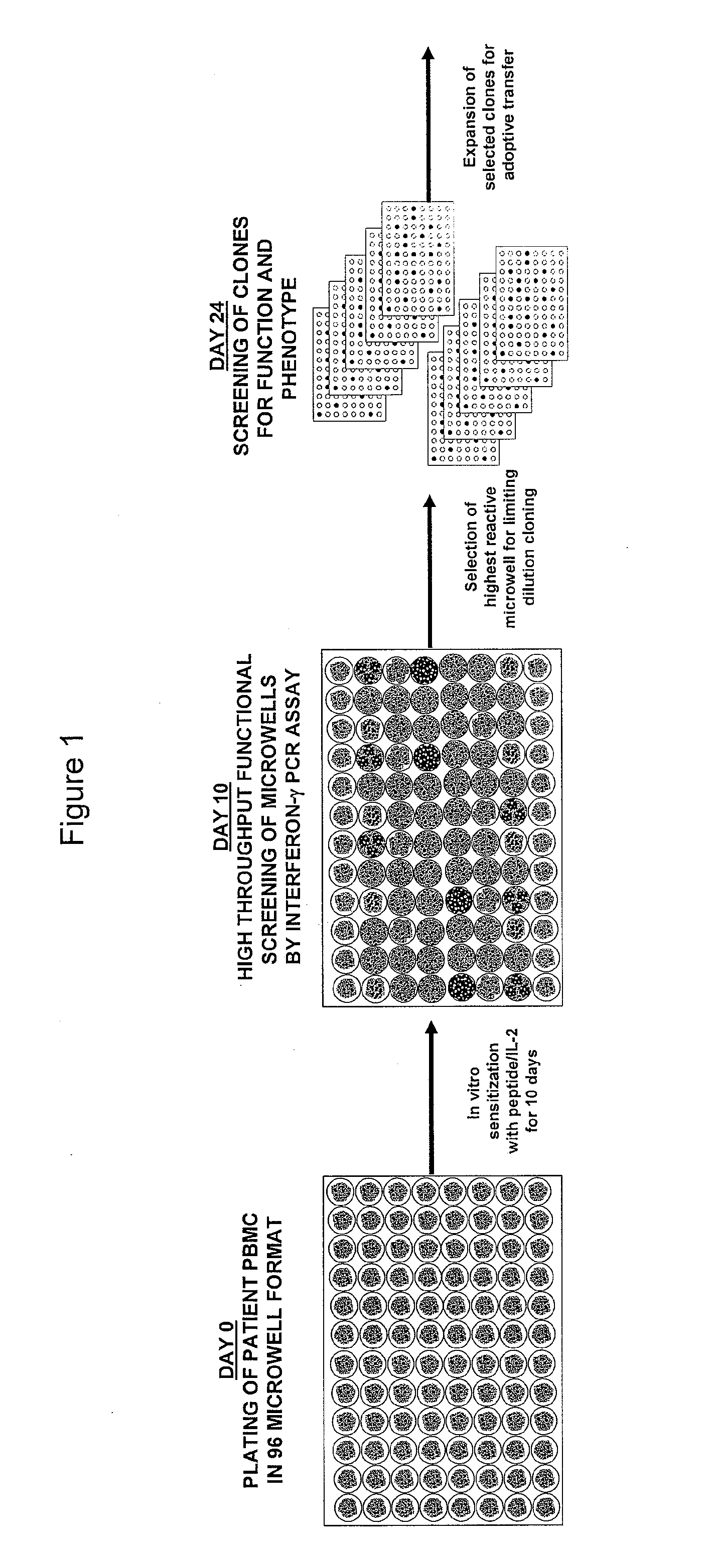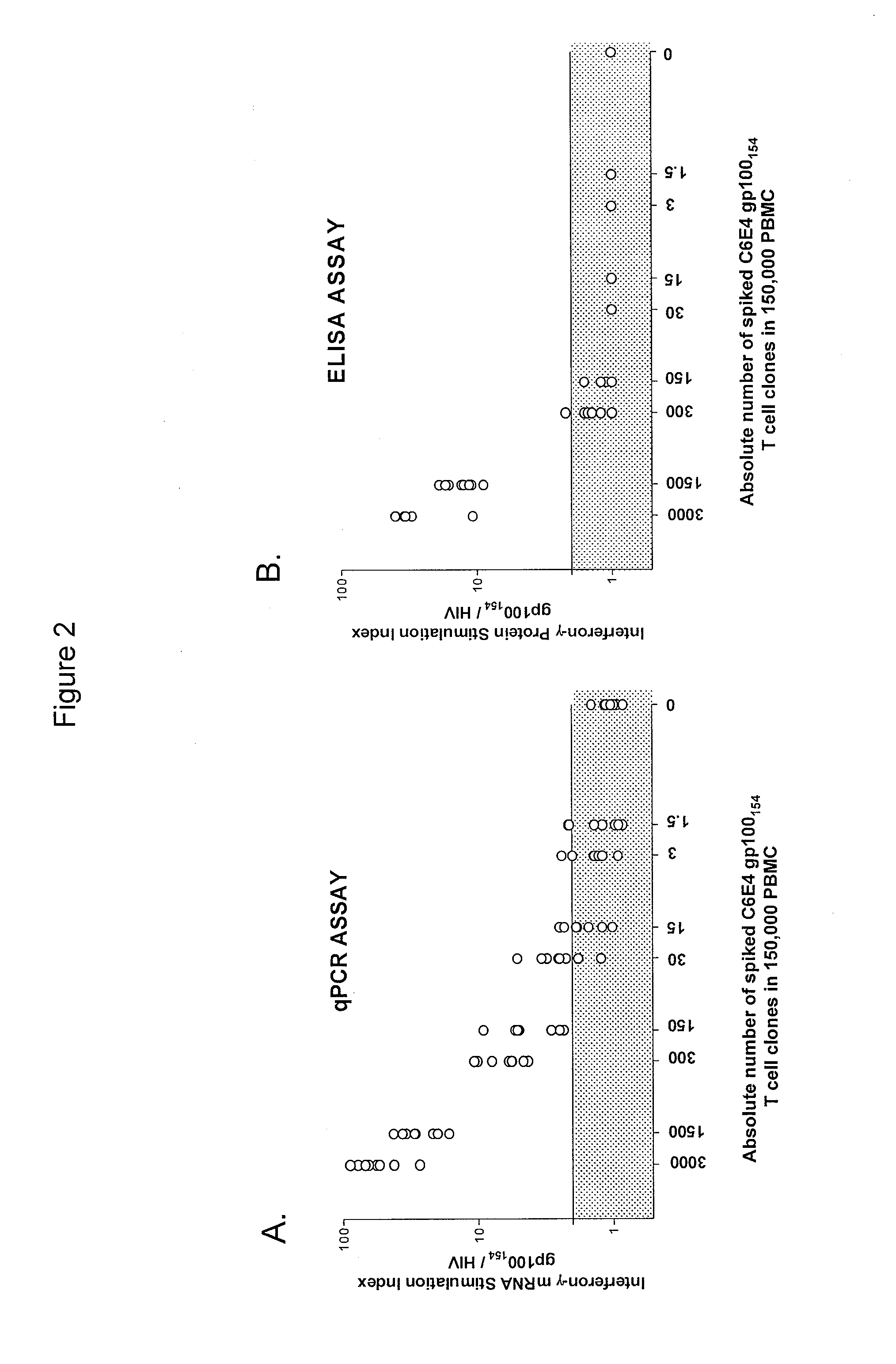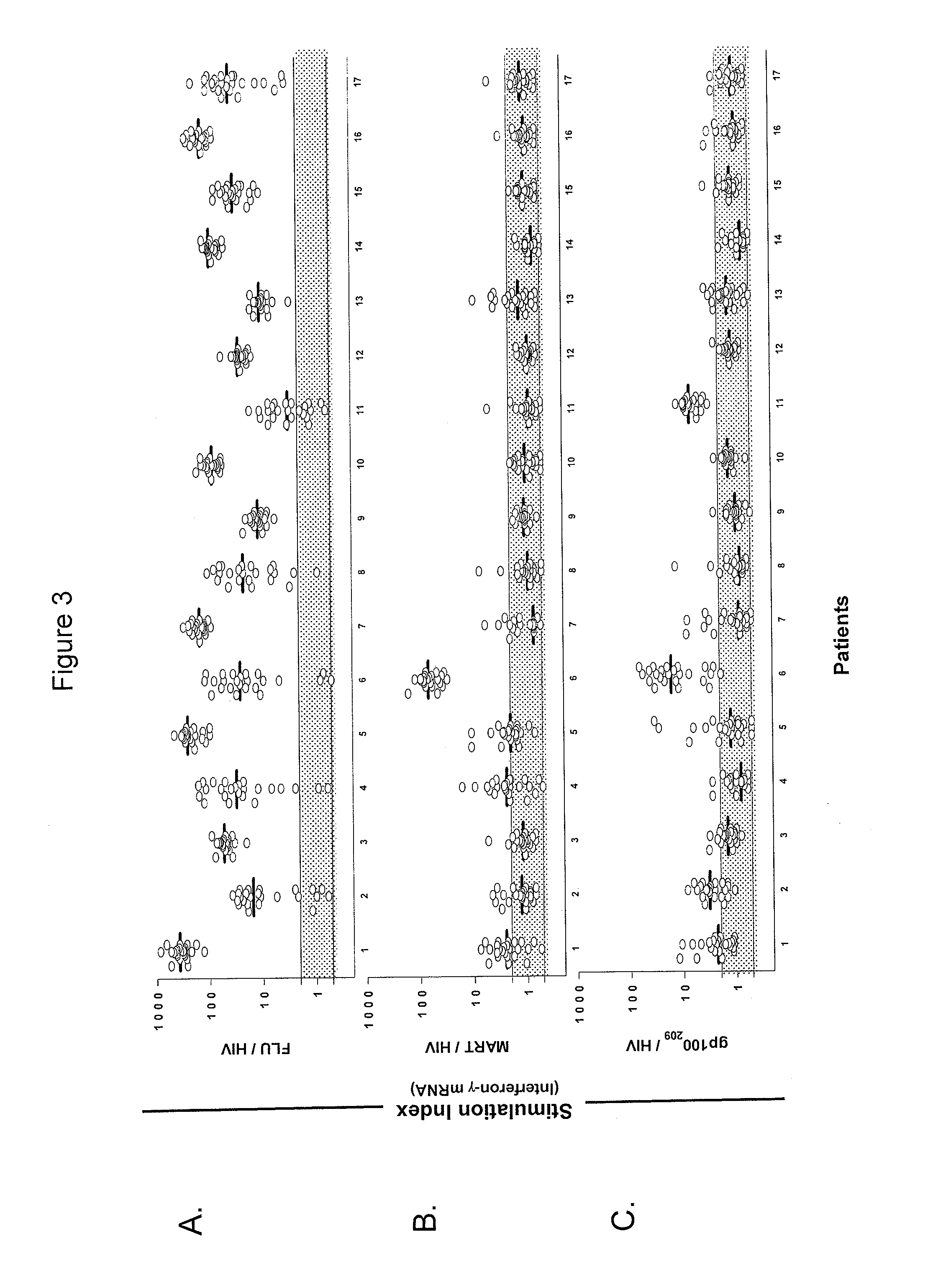Methods of obtaining antigen-specific T cell populations
a technology of t cell populations and t cell populations, which is applied in the field of methods of obtaining antigen-specific t cell populations, can solve the problems of high sensitiveness, and achieve the effects of high throughput screening, rapid and efficient, and high sensitiveness
- Summary
- Abstract
- Description
- Claims
- Application Information
AI Technical Summary
Benefits of technology
Problems solved by technology
Method used
Image
Examples
example 1
[0098]This example demonstrates a method of stimulating PBMCs from peripheral blood of a host, which PBMCs are divided into more than one sub-population, with an antigen, or an epitope thereof, and IL-2.
[0099]Synthetic peptides are made for in vitro stimulation of PBMCs using a solid phase method on a peptide synthesizer at the Surgery Branch (NCI). The purity of each peptide is confirmed by mass spectrometry and each is resuspended to 1 mg / ml for in vitro use. Peptides of the following sequences are made: gp100209-217 (ITDQVPFSV; SEQ ID NO: 1), gp100154-162 (KTWGQYWQV; SEQ ID NO: 2), MART-127-35 (AAGIGILTV; SEQ ID NO: 3), HIVpol476-484 (ILKEPVHGV SEQ ID NO: 4), and FLU M158-66 (GILGFVFTL SEQ ID NO: 5).
[0100]PBMCs obtained by leukapheresis from HLA-A2+ metastatic melanoma patients are in vitro stimulated in accordance with a 6- or 10-day procedure. The 6-day procedure comprises the following: On day 0, cryopreserved PBMCs are thawed, washed twice with CM, and plated in a 96-well pla...
example 2
[0102]This example demonstrates a method of identifying an antigen-reactive sub-population by determining by high throughput qPCR the expression of a factor produced by PBMCs.
[0103]PBMCs undergo the 6- or 10-day in vitro stimulation as described in Example 1. On the last day of stimulation (Day 6 or Day 10), T2 cells (HLA-A2+ peptide transporter-associated protein deficient T-B hybrid) are pulsed with either a relevant sensitizing (stimulating) peptide or an irrelevant (control) peptide at 1 μg / mlin medium for ˜2 hrs at 37° C. T2 cells are washed three times to remove unbound peptide. From each bulk PBMC culture to be assayed, two equal aliquots of cells (each ˜50 μA) are removed and incubated in parallel with 3×104 T2 cells (pulsed with either relevant or irrelevant peptides) in a 0.2-ml volume in individual wells of a 96 well U-bottom tissue culture plate. After 3 hours of incubation, the 96-well plate is spun (900 RPM, 5 minutes), the supernatant is completely discarded, and the ...
example 3
[0105]This example demonstrates a method of identifying an antigen-reactive sub-population by determining by a conventional ELISA assay the expression of a factor produced by PBMCs.
[0106]PBMC and derived lymphocyte cultures are tested for antigen-specific reactivity in a cytokine release assay using commercially available IFN-γ ELISA kits (Endogen, Pierce, Rockford, Ill.). T2 cells are pulsed with relevant or irrelevant peptide (1 μg / ml) in medium for ˜2 hrs at 37° C., followed by washing (three times) before initiation of co-cultures. For these assays, 105 responder cells (PBL or cloned T cells) and 105 stimulator cells (T2 cells or tumor lines) are co-incubated in a 0.2-ml volume in individual wells of a 96-well plate. Supernatants are harvested from duplicate wells after 20-24 hours and IFN-γ secretion is measured in culture supernatants, diluted to be within the linear range of the assay. All data from the ELISA-based assays is presented herein as a mean of duplicate samples. Cu...
PUM
| Property | Measurement | Unit |
|---|---|---|
| time | aaaaa | aaaaa |
| time | aaaaa | aaaaa |
| time | aaaaa | aaaaa |
Abstract
Description
Claims
Application Information
 Login to View More
Login to View More - R&D
- Intellectual Property
- Life Sciences
- Materials
- Tech Scout
- Unparalleled Data Quality
- Higher Quality Content
- 60% Fewer Hallucinations
Browse by: Latest US Patents, China's latest patents, Technical Efficacy Thesaurus, Application Domain, Technology Topic, Popular Technical Reports.
© 2025 PatSnap. All rights reserved.Legal|Privacy policy|Modern Slavery Act Transparency Statement|Sitemap|About US| Contact US: help@patsnap.com



